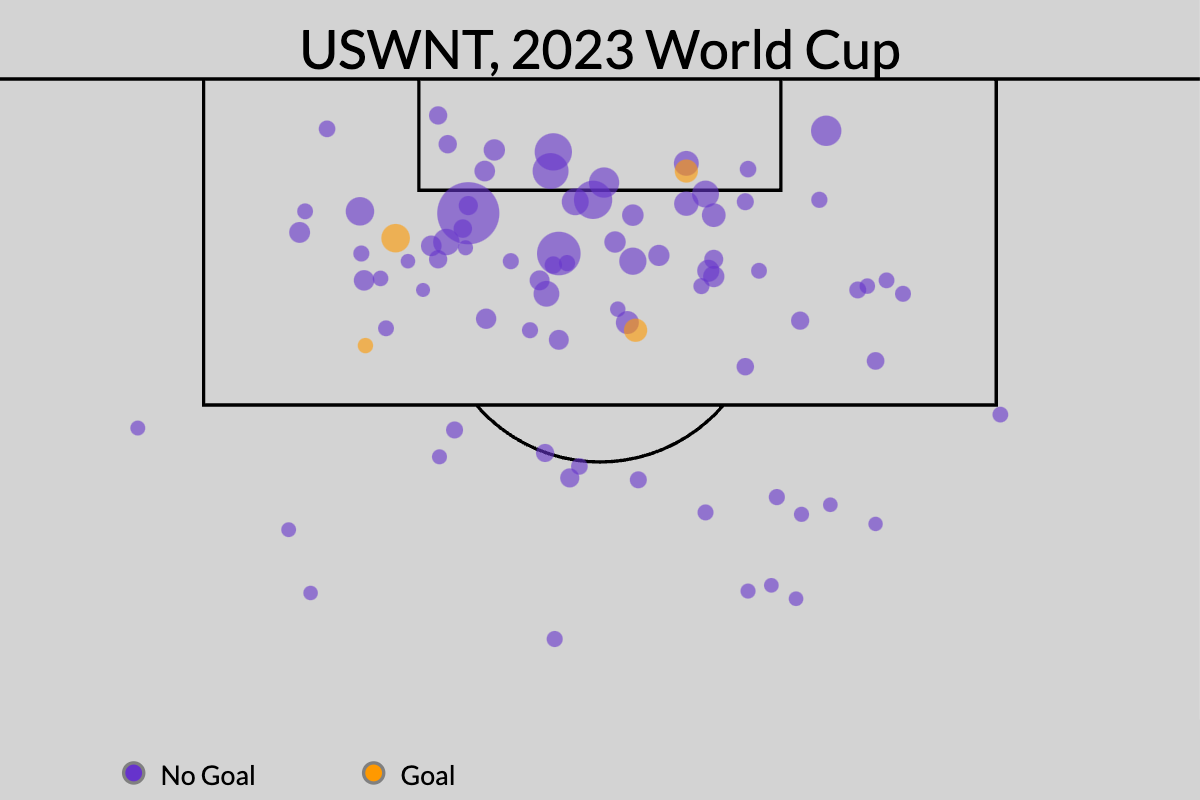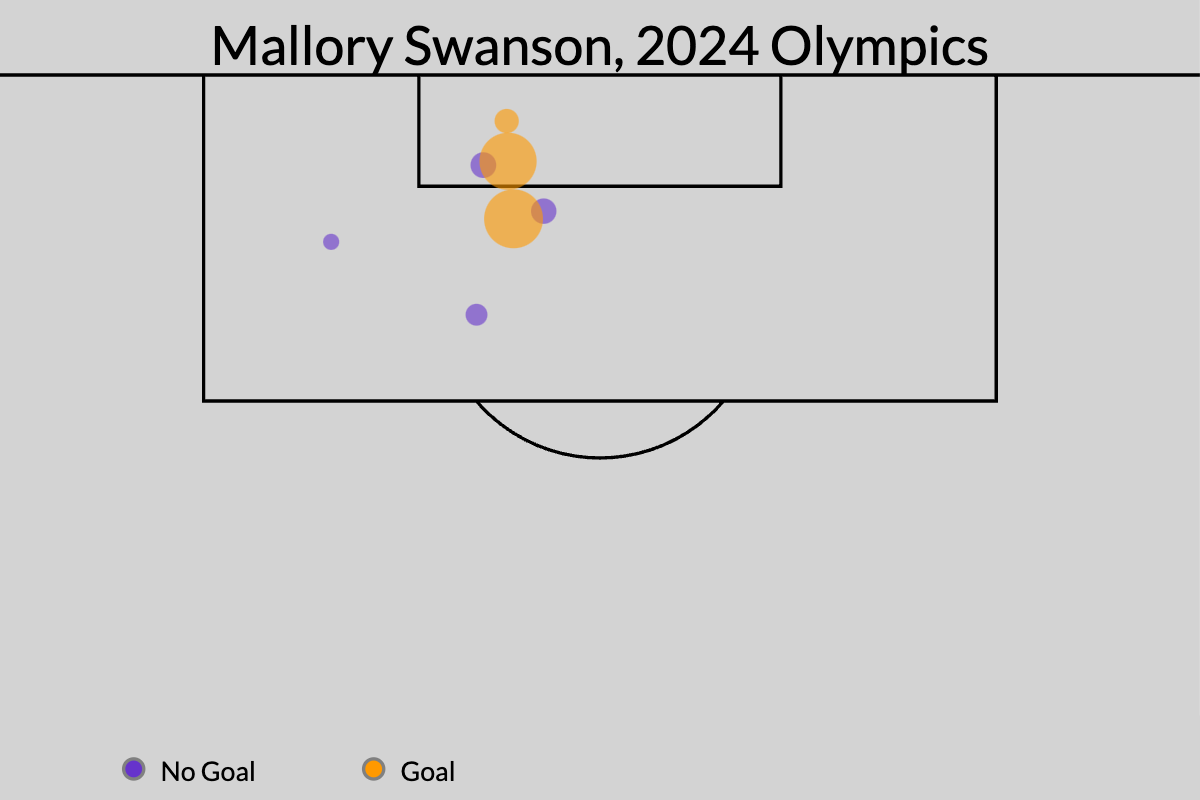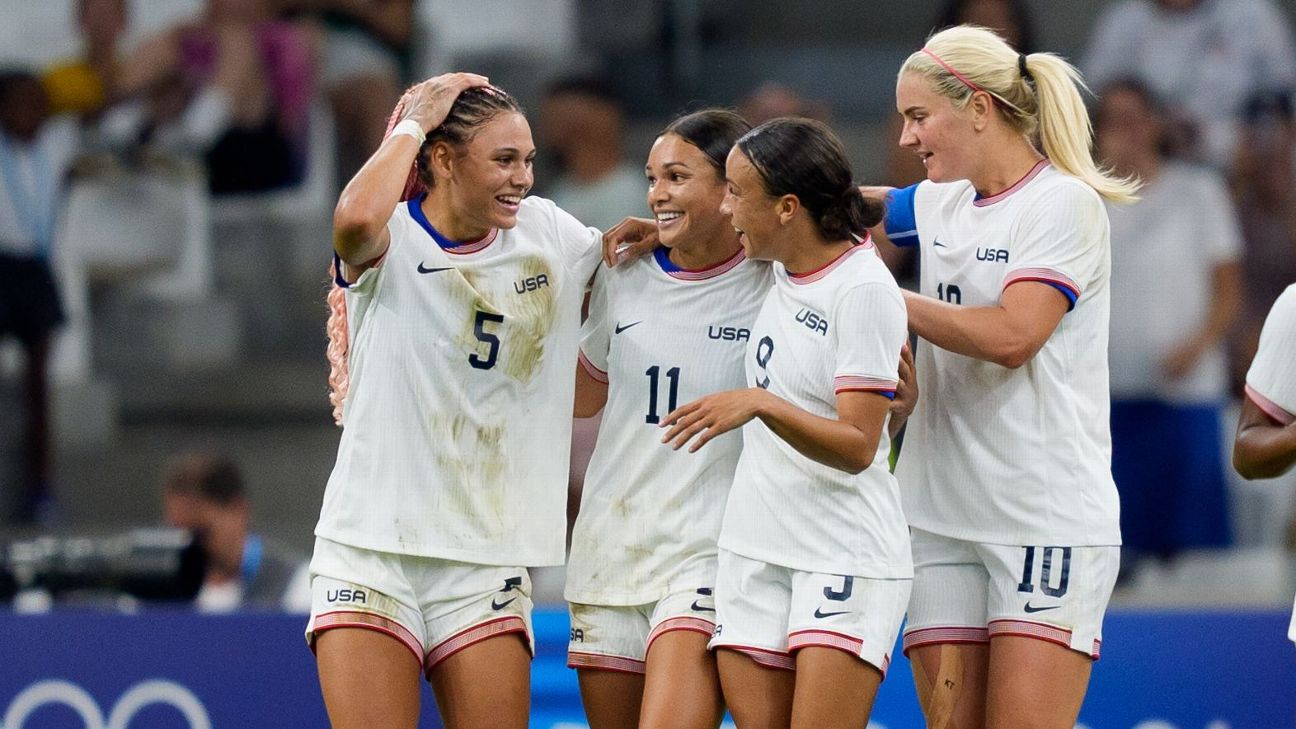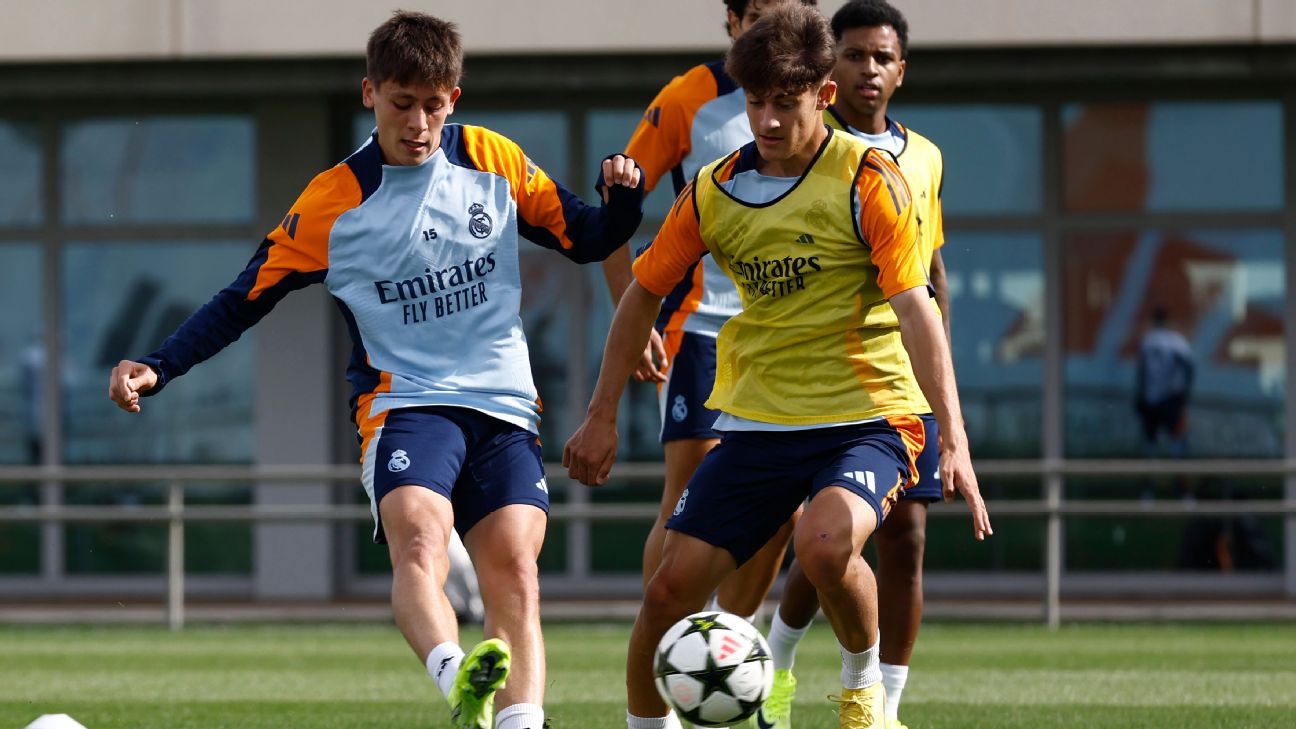Here are two things I thought I felt quite strongly about just a few days ago:
(1) The U.S. women’s national team wasn’t as bad as everyone thought at last year’s World Cup. (2) International managers don’t manage as much as everyone thinks.
Two games into the 2024 Olympics, I don’t really know what to believe anymore.
First, the U.S. dominated Zambia 3-0. And although that team includes two of the best players on the planet in Barbra Banda and Racheal Kundananji, it’s still Zambia, the 64th-ranked team in the world. Plus, after a 34th-minute red card, the U.S. played two-thirds of the match with an 11-10 advantage. There were plenty of reasons not to get too excited about the progress — until the Americans obliterated Germany on Sunday: a 4-1 win against the fourth-ranked team in the world, and no red-card-related reasons to write anything off.
Two games into Emma Hayes’ first tournament at the helm, the Americans already look as if they might be back to being the dominant team in world soccer. At the very least, per ESPN BET, they’re the favorites to take gold — ahead of the current world champion, Spain.
But it’s not just that the Americans are playing better than they did a year ago, when the U.S. suffered its worst finish at a World Cup. It’s that a very similar roster of players suddenly looks totally different. What has changed about the way the U.S. is playing, and why is it playing so much better under Hayes than it was previously?
A brief history of the 2023 Women’s World Cup
The story of last summer’s struggles was pretty simple: The U.S. couldn’t put the ball in the net.
Across its four World Cup matches, the U.S. created a ridiculous 9.3 expected goals. That’s about 2.3 xG per game — or right around what the best attacks in the women’s club game tend to create. The problem? Those 9.3 expected goals resulted in only four actual goals.

But even that wayward finishing could’ve been enough to make a deeper run. Under coach Vlatko Andonovski, the team conceded a single, solitary goal across four matches at the World Cup, or 290 minutes of game time. And it wasn’t the result of some kind of luck or superstar shot-stopping. The one goal was only slightly ahead of the 1.43 xG conceded. That’s 0.36 xG per game — way better than what the best defenses in the club game concede.
If you allow only one goal in four games, you tend to go further than the round of 16 in the World Cup. The same goes for teams that score 75% of the goals in their matches.
But although the driving force behind the U.S.’s early exit was the volatility of knockout soccer, it still didn’t look great. As tactical sophistication has risen across Europe, with the continued investment and professionalization of the sport, the American women were mostly just bombing the ball up the field and chasing after it.
These were some statistical averages from all matches played by all teams at the World Cup:
• Crosses as a percent of final-third passes: 18.3%
• Speed the ball moved up the field: 1.48 meters per second
• Percent of passes played forward: 40.6%
There is, of course, no right way to play, but underdogs typically cross the ball a lot and attack quickly into space with a heavy dose of forward passes. And at the World Cup, the U.S. played like a less-talented side. More than 1 in 5 of the Americans’ final-third passes were crosses (21.9%), and they moved the ball upfield at 1.71 meters per second and played 42.7% of their passes forward.
Although the helter-skelter style led to barely any chances conceded and a ton of chances created, there were still legitimate questions over how sustainable such an approach would be. What would happen, say, once you played against Spain and it wouldn’t let you have the ball? What about when you matched up against a side that was more organized and capable of beating you in all the transitions you were happy to create?
The loss to Sweden in penalties rendered any of those questions moot and ultimately led to Andonovski’s exit. And although it looks as if the U.S. and Spain could be on a collision course toward what could be an all-time great match at the Olympics, we’re still not likely to get an answer to any of those questions.
How Emma Hayes has transformed the U.S.
The biggest change from last year to this year is, once again, pretty simple: the shots are going in this time around. The U.S. has created 6.24 xG and turned that into seven goals. Most notably, Alex Morgan didn’t score once from three-plus xG last summer. She didn’t make the Olympic roster, and her replacement, Mallory Swanson, has already scored three goals from approximately two xG.

But it’s not just the kicking of the ball into the net that has improved.
Through two matches, here’s how all 12 Olympic sides stack up in terms of the combined quality and quantity of the chances they’ve created and conceded:

It’s only two games, but the U.S. has been significantly better than it was at the World Cup, against significantly tougher competition. (The Americans still top the chart, albeit to a smaller degree, when you adjust for minutes played up/down players.) Normally, I’d attribute this to a change in personnel. The biggest one, of course, is swapping the younger and much more mobile Swanson for an aging and much more limited Morgan. (Swanson was injured during the World Cup.)
But outside of that? The U.S. team is quite similar. Among the 11 most-used players at the World Cup, Morgan has been replaced by Swanson, Tierna Davidson has come in for retired Julie Ertz at center back, and Sam Coffey has taken Andi Sullivan’s place in the midfield. The eight other starters — Alyssa Naeher in goal, Naomi Girma at center back, fullbacks Crystal Dunn and Emily Fox, midfielders Lindsey Horan and Rose Lavelle, and wingers Sophia Smith and Trinity Rodman — are the same. So too are the two most-used players off the bench: forward Lynn Williams and midfielder Emily Sonnett.
Despite 11 of the 13 most-used players from the World Cup remaining at the Olympics, if you put different-colored jerseys on the U.S. players, they’d be almost totally unrecognizable from the group that disappointed last summer.
Let’s go back to those key numbers from earlier. In its first two competitive matches under Hayes, the U.S. has crossed the ball with just 12.8% of its final-third passes — the second-lowest number in the Olympics after Spain. The Americans have moved the ball upfield at a rate of 1.26 meters per second — closer to average but a massive drop-off from the 1.71 rate we saw last summer. And they’ve played 32.7% of their passes forward — again, a rate higher than only Spain.
Now, some of this is certainly affected by the U.S. going up early in both of its matches — something that happened only once last summer. But these numbers all look quite similar to what Hayes’ teams produced when she was the manager of Chelsea: a high level of measured possession dominance but also the ability to find space and attack with speed.
Put more simply, it appears the Americans can actually possess the ball for … maybe the first time ever. They have ideas for how to break down the opposition — advanced midfielders frequently combining with their same-side wingers, especially on the right with Lavelle and Rodman — and then they’re able to actually hold on to the ball when they have a lead.
Again, it’s only two games, but they’re averaging more possession than ever (66%), and those crossing and forward-passing numbers are the lowest they’ve been for the U.S. for any tournament in the Stats Perform database, which goes back to the 2011 Women’s World Cup:

Now, it’s not all perfect. Some of the goals against Germany were quite fortunate, and the Germans themselves squandered a couple of big chances. Plus, the U.S. already conceded more xG at the Olympics than it conceded in all four games at the 2023 World Cup.
But beyond that, these first two games have been just about as good as it can get.
This just isn’t supposed to happen. At Chelsea, Hayes almost single-handedly transformed the women’s side into a world-class team. She signed new players, and then she was able to train those players every day. These are the ways you make a team better — and that whole process took place over more than a decade. In the international game, you don’t get to add new players, and you get only a handful of competitive games and a limited number of training sessions per year. The avenues for improvement are much thinner, and the time horizons are much shorter.
But perhaps the U.S. is an outlier. It’s the deepest talent pool in the world, and now it has arguably the top coach in the world figuring out how those pieces should fit together. Good coaches can transform the way a team plays. Great coaches can make their teams better. The best coaches can do both.
Hayes has the U.S. playing in a totally new way, back at the level we’re used to seeing — and it has taken only 180 minutes here to get there.



